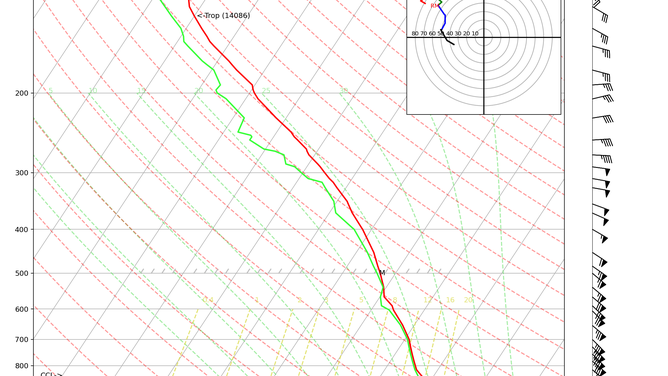Watch: Meteorologists brave fury of Hurricane Ida to launch weather balloon
Ever try to launch a balloon in 83 mph winds? The team from the National Weather Service office in New Orleans did just that Sunday evening during the height of Hurricane Ida.
SLIDELL, La. -- As the New Orleans area faced the wrath of Hurricane Ida Sunday evening with blistering winds and torrential rains, meteorologists at the local National Weather Service office knew they still had a very important job to do:
Get out there and launch a 5-foot weather balloon!
That might seem like a trivial matter with the dangerous conditions surrounding southeastern Louisiana. At the time of the launch, winds were gusting to 59 mph at the NWS office in Slidell, just across Lake Pontchartrain from New Orleans where gusts were reaching 83 mph.
But the mission was critical to aid in getting an accurate assessment of the storm and to help our computer forecast models determine what Ida was up to next. And as you can see, the meteorologists were quite happy about it as the balloon managed to successfully dodge obstacles on its way skyward.
A weather balloon launch in the midst of a hurricane moving through is a two person job. As long as there is no lightning in the area, we can go out and do a launch. A small victory that it made it over the tree line and we'll be able to analyze data from #ida #LAwx #MSwx pic.twitter.com/M7KSmOnVFg
— NWS New Orleans (@NWSNewOrleans) August 29, 2021
Weather balloons are launched twice a day at the same time from 91 sites around the nation -- in the Central Time Zone while on Daylight Saving Time, it's at 6 a.m. and 6 p.m. Instruments attached to the balloon, called a rawinsonde, measure important data such as temperature, dew point, and wind speed and direction.
The data is used to get an accurate assessment of the upper levels of the atmosphere and, among other things, provide our computer models with the important data it needs to calculate future weather.

Weather balloon results from a launch at 6 p.m. CDT near New Orleans on Aug. 29, 2021.
(NOAA)
Weather balloons also provide snapshots of severe weather potential by determining instability and wind shear, and how saturated the air mass is for calculating potential rainfall.
In this case, the balloon helped measure the wind field as the hurricane raged around them. Its first wind measurement didn't get going until it reached about 900 feet, where it was 61 knots (70 mph) increasing to 74 knots (85 mph) at about 1,800 feet. Its peak measurement was 98 mph at about 2,700 feet.
MORE: How Do They Launch a Weather Balloon | How To Read Data From a Weather Balloon
Winds held generally steady around 65-80 knots (75-92 mph) then gradually decreased as the balloon floated higher, getting down to just 35 knots at around 35,000 feet.
The balloon provided data until it reached just over 65,000 feet. The balloons themselves usually rise to about 100,000 feet until the pressure inside is too great compared to the thin outside atmosphere and it pops, eventually returning to Earth.
By the way, if you happen to find a rawinsonde on the ground from a previous launch, the Weather Service would greatly appreciate it if you could mail it back to them so it could be reused.